Getting your Trinity Audio player ready...
Blurring the boundaries
The first private space mission of the "Polaris" program was scheduled to launch this week, with the liftoff of a SpaceX Dragon spacecraft carrying four private astronauts. Originally set for the early morning hours of Monday, August 26, the launch has been delayed until at least August 30 due to bad weather. The Polaris Dawn mission is funded by billionaire Jared Isaacman, who will also command the mission, marking his second spaceflight.
Isaacman, 41, the owner of an online payment company, holds a civilian pilot's license and has trained on several military aircraft, including his own MiG-29. In 2021, he commanded the Inspiration 4 mission, the first space mission in history where all participants were private astronauts, which was also funded by him. Now, he aims to take his collaboration with SpaceX one step further by spearheading an entire program of groundbreaking private space missions. The first mission, Polaris 1, or ‘Polaris Dawn’, aims to achieve several pioneering feats.
Among other objectives, the crew is expected to reach a distance of approximately 1,400 kilometers from Earth—farther than humans have traveled since the manned missions to the Moon during the Apollo program. The spacecraft will approach the edge of the Van Allen belts, which protect Earth from radiation. One of the mission's goals is to measure the astronauts' exposure to radiation and its effects. Subsequently, the SpaceX Dragon spacecraft is expected to settle into an orbit at an altitude of 700 kilometers,well beyond typical human operations. For comparison, the International Space Station orbits Earth at an altitude of 400 kilometers, and the Hubble Space Telescope, visited by several astronaut crews over the years, orbits at 550 kilometers.
A major innovation of this mission is the planned "spacewalk" by a private astronaut crew for the first time. The crew will test SpaceX's new spacesuits, designed for both in-cabin use and extravehicular activities. Unlike the suits used on the International Space Station, these suits are connected by tubes to the spacecraft’s life support systems, without an independent life-support system for each astronaut.
Due to the absence of an airlock on the Dragon spacecraft, all four crew members will need to be in spacesuits and exposed to the vacuum of space when the hatch is opened. Two astronauts will perform the spacewalk, while the other two will remain inside. This will mark the first time in history that four crew members are simultaneously exposed to space conditions, surpassing the previous record of three astronauts during the Apollo missions.
5 View gallery
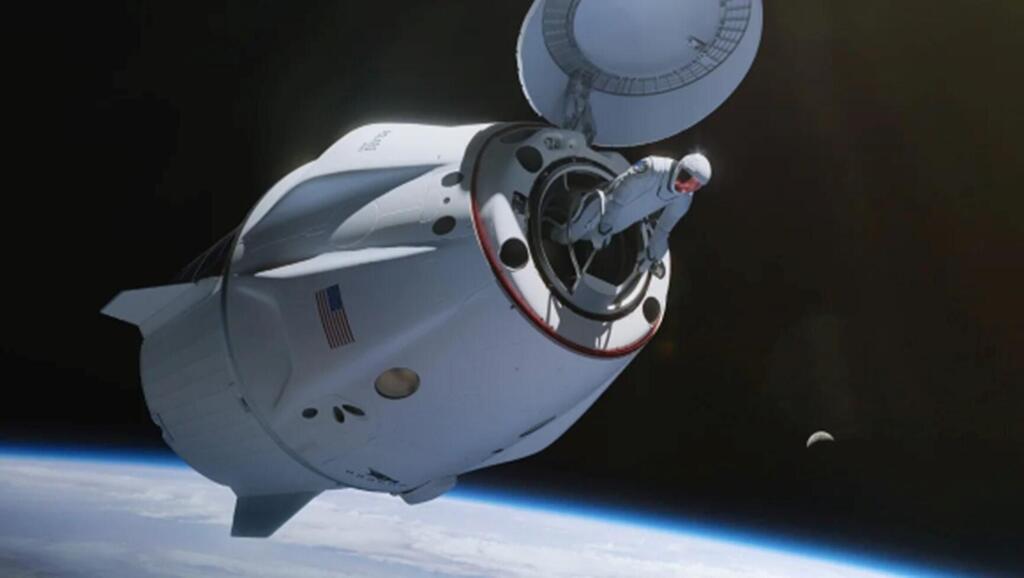

The first spacewalk by private astronauts, breaking historical boundaries. Illustration of an astronaut floating outside the Dragon spacecraft
(Source: SpaceX)
The crew is expected to spend five days in space, during which they will conduct 38 experiments and studies. In addition to Isaacman, who will be making his second space flight, the mission team includes Scott Poteet, a former U.S. Air Force test pilot, and Ironman triathlete; Sarah Gillis, an aerospace engineer at SpaceX responsible for training the company's astronauts; and Anna Menon, a biomedical engineer and mission manager at SpaceX, who previously worked on NASA's ground control team for the International Space Station.
Technically, these are private astronauts, but in practice, this is a crew with extensive backgrounds and experience in the space field, and their training is on par with that of professional astronauts, including centrifuge training to handle strong G-forces. The Polaris program seems poised to go down in history as a significant step in blurring the boundaries between the era when space was dominated by national agencies and the new reality of extensive and pioneering private activity beyond Earth. At least two more missions are planned within the program. One of these—if plans materialize—will take place aboard the Starship spacecraft, which is still under development and testing.
5 View gallery
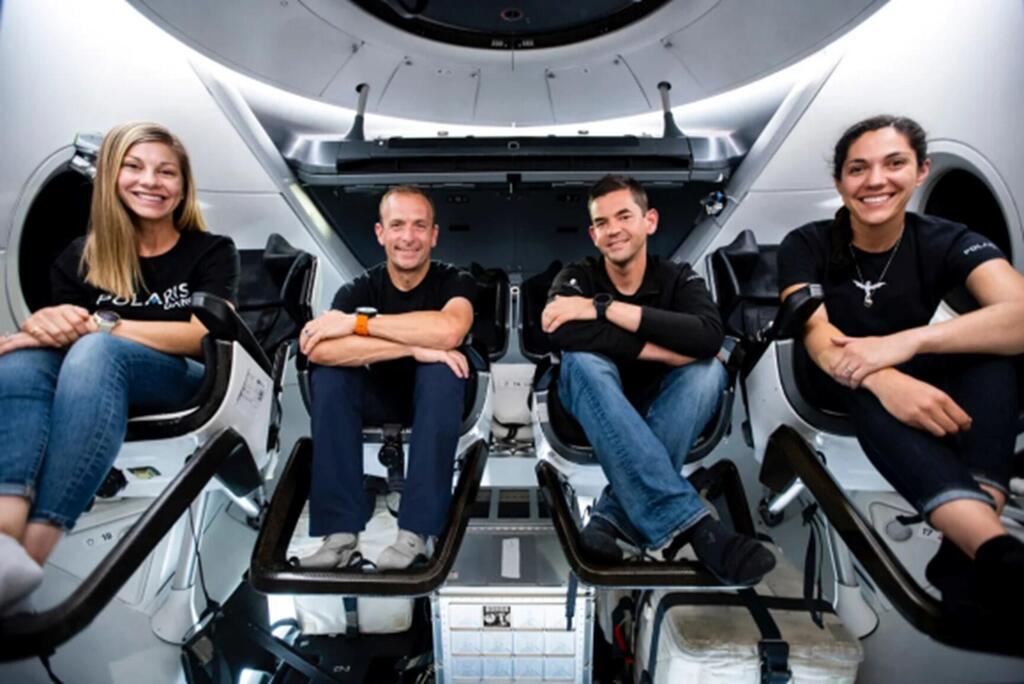

Private astronauts with training, credentials and plans comparable to those of a professional crew. Polaris Dawn mission crew aboard the Dragon spacecraft. From right: Gillis, Isaacman, Poteet, and Menon
(Photo: SpaceX)
We made it, against all odds
China has successfully placed two satellites into a unique orbit around the Moon, approximately five months after a malfunction in their launch rocket initially prevented them from reaching the planned orbit. The satellites, named DRO-A and DRO-B after their intended orbit, Distant Retrograde Orbit, are in a path relatively far from the Moon and opposite to its direction of rotation. While China has not officially disclosed the mission of these satellites, an article published last year detailed their advanced navigation method in this orbit, assisted by another satellite orbiting Earth
The satellites were launched in March of this year aboard a Long March 2C rocket, but due to a malfunction in the rocket's second stage, they failed to enter their planned orbit. The original plan was to place them in a highly elliptical orbit that would eventually intersect the Moon's orbit around Earth, similar to the trajectory followed by the Israeli spacecraft Beresheet. Eventually, the Chinese team managed to place the satellites into a different orbit using fuel that was intended for in-space maneuvers. As a result, the satellites will have less fuel available for orbital corrections and other maneuvers during their mission around the Moon, likely shortening the initially planned mission's duration.
While the satellite duo's mission may not have a direct impact on China's immediate lunar activities, their successful operation despite the launch failure demonstrates China's advanced capabilities in deep space. Their mission is likely part of China's broader ambitions to land humans on the Moon in the coming years and establish a manned station there. The two satellites will undoubtedly contribute to the development of the navigation and communication systems necessary to overcome these challenges.
5 View gallery
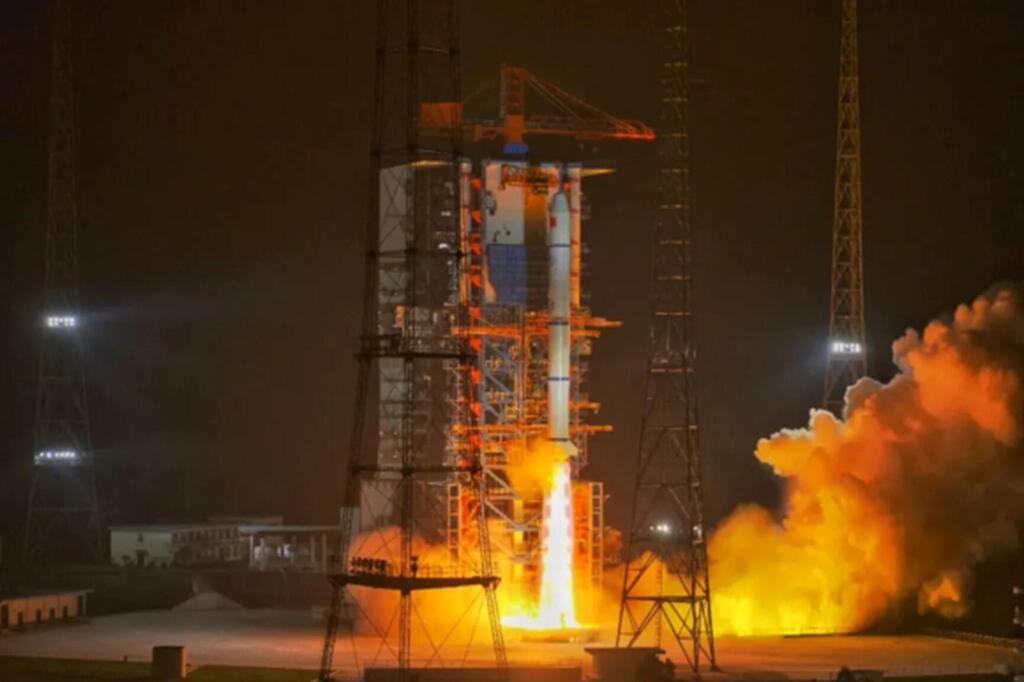

Overcoming a malfunction in the rocket's second stage. Launch of a Long March 2C rocket from the Xichang site in China
(Photo: OurSpace)
Passing by home on the way to Jupiter
The European spacecraft JUICE, currently en route to Jupiter to explore the planet and its moons, was launched over a year ago but is still relatively close to Earth. This week, it performed a unique maneuver, flying by the Moon and Earth as it prepares for a flyby of Venus in about a year. After that, it will return for another flyby of Earth in September 2026, followed by a final flyby in January 2029. These maneuvers, known as "gravitational slingshots," are designed to use the gravity of celestial bodies to increase the spacecraft's speed, enabling it to reach Jupiter with minimal fuel consumption. JUICE is expected to arrive at Jupiter in July 2031, two and a half years after its final Earth flyby.
Upon reaching Jupiter, JUICE is scheduled to spend several years orbiting the planet, making numerous close passes of its moons. It is expected to ultimately enter orbit around Ganymede, Jupiter's largest moon, and conduct the first close-up study of it.
5 View gallery
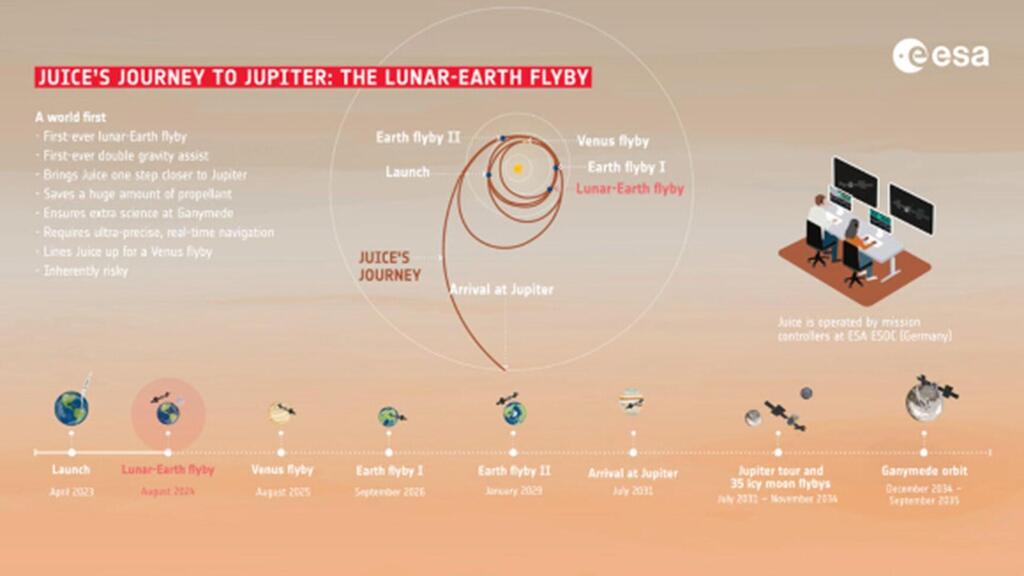

An eight-year journey covering 600 million kilometers on the way to Jupiter. JUICE's flyby plan
(Illustration: ESA)
The spacecraft is equipped with ten scientific instruments, including an Israeli-made Ultra Stable Oscillator (USO) produced by AccuBeat in Jerusalem. The operation of this device is led by Professor Yohai Kaspi of the Weizmann Institute of Science. The USO functions similarly to an atomic clock, but instead of measuring time, it generates an extremely stable signal over long periods. These signals will be transmitted via the spacecraft's radio transmitter as it enters or exits orbit around Jupiter, from Earth's perspective. As they pass through Jupiter's upper atmosphere, measuring the tiny deviations in these signals from the device's highly stable rhythm will allow scientists to study the properties of this atmosphere. Additionally, six of the spacecraft's scientific instruments are equipped with chips and other components by the Israeli company Ramon Space.
Such flybys involve a significant degree of risk, requiring extremely high precision to achieve the desired fuel savings. Particularly noteworthy is the complex maneuver where the spacecraft first passed close to the Moon and then, a day later, flew by less than 7,000 kilometers from Earth's surface. In fact, the Moon flyby slightly accelerated the spacecraft, while the Earth flyby significantly slowed it down and altered its flight direction by 100 degrees, setting it on course for its planned encounter with Venus.
"The gravity assist flyby was flawless, everything went without a hitch, and we were thrilled to see Juice coming back so close to Earth," said Ignacio Tanco, the mission's Spacecraft Operations Manager. "Thanks to very precise navigation by ESA’s Flight Dynamics team, we managed to use only a tiny fraction of the propellant reserved for this flyby. This will add to the margins we keep for a rainy day, or to extend the science mission once we get to Jupiter," he added.
The maneuver also allows the engineering and science teams to test and calibrate the spacecraft's instruments by taking real measurements of celestial bodies. By comparing these measurements to well-established data on complex celestial bodies, such as Earth and the Moon, researchers can verify that the instruments are functioning as intended and determine if any adjustments are needed before they begin operating around Jupiter.
5 View gallery
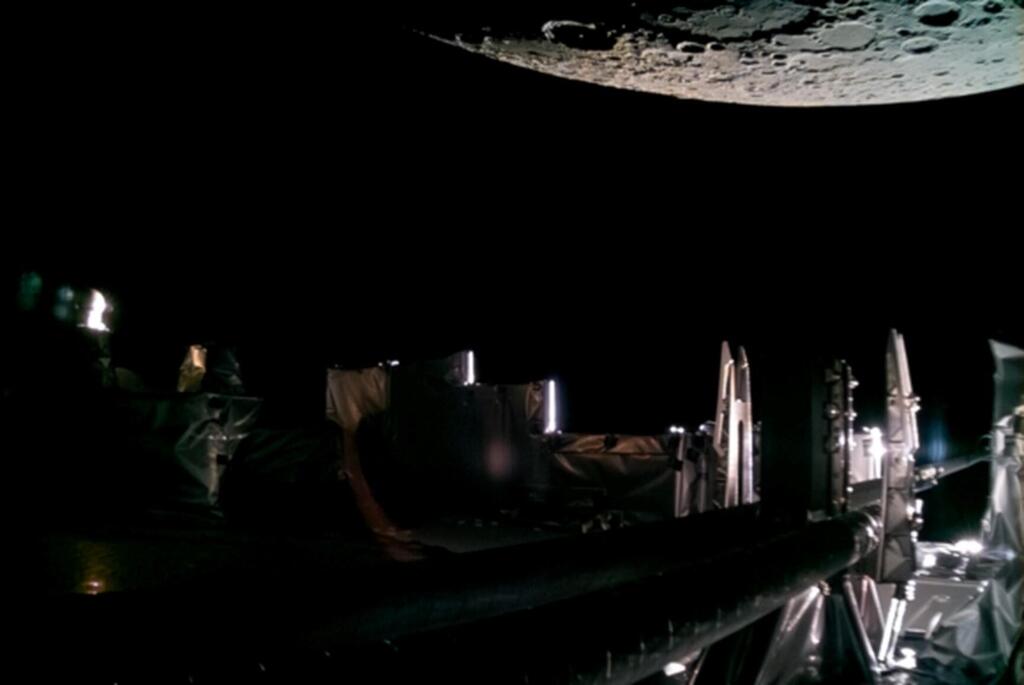

Gaining speed in order to reach Jupiter with more fuel. Selfie of JUICE with the Moon. Earth can also be seen in the background
(Photo: ESA)
Content distributed by the Davidson Institute of Science Education.

